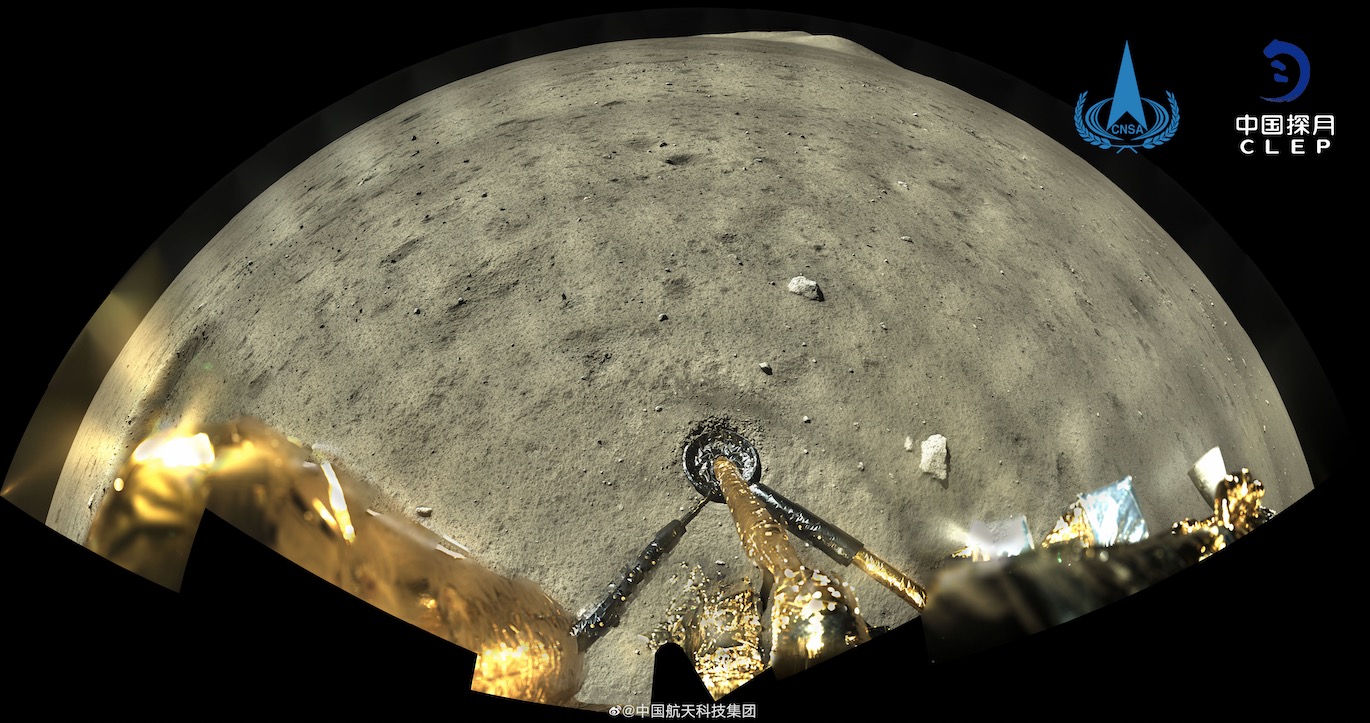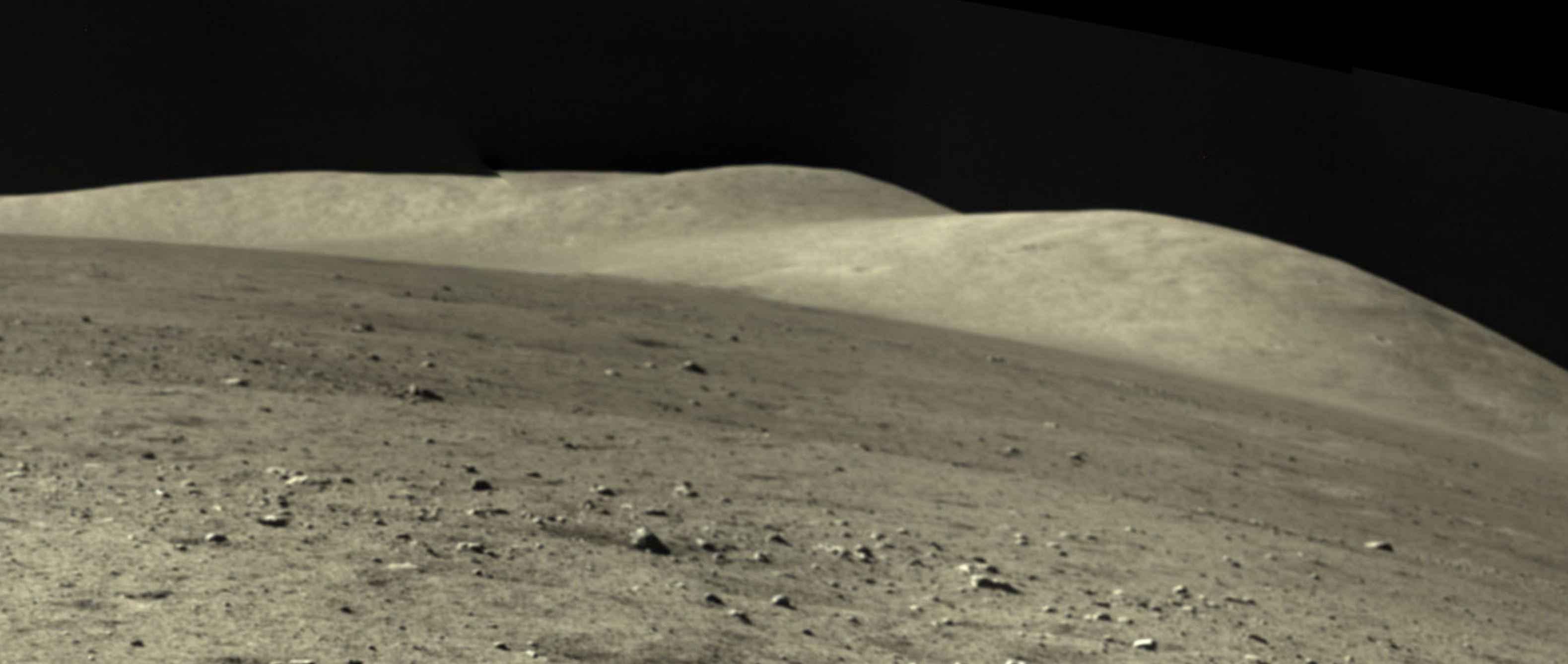Amazing panorama shows China's Chang'e 5 landing site on the moon (photos)
China's Chang'e 5 lander has returned its first panorama from its landing site on the moon.
The sample-return mission made a successful soft landing in the Oceanus Procellarum ("Ocean of Storms") region on Tuesday (Dec. 1) and almost immediately began its science and imaging tasks.
A panorama released on Wednesday (Dec. 2) shows a cratered lunar surface with a number of loose rocks close to one of the spacecraft's landing legs. The image shows how the leg impacted the loose rock and dust that make up the lunar regolith, while large, distant peaks can be seen on the horizon.
Video: Watch China's Chang'e 5 land on the moon and collect samples
The Chang'e 5 lander's Panoramic Camera consists of two cameras mounted on a rotating platform. It is designed to map the topography and features surrounding the Chang'e 5 landing site, a large volcanic mound known as Mons Rümker. Teams back on Earth can then use the imagery to assist the collection of samples.
Chang'e 5 is a historic 23-day quest to collect lunar samples and return them to Earth — the first such moon mission since 1976, when the Soviet Union's Luna 24 probe hauled about 6 ounces (170 grams) of lunar material home.
The four-module, 18,100-lb. (8,200 kilograms) Chang'e 5 launched on Nov. 23. The spacecraft arrived in lunar orbit four and a half days later, and the lander separated from the mission orbiter on Nov. 29 in preparation for the landing attempt.
Sampling operations using a drill and a scoop began just a few hours after landing. An ascent vehicle on top of the lander will send the lunar material into space on Thursday (Dec. 3) and later meet up with the waiting orbiter. If all goes well, the samples will land in Inner Mongolia around Dec. 16 or Dec. 17.
Breaking space news, the latest updates on rocket launches, skywatching events and more!
In pictures: China on the moon! A history of Chinese lunar missions
China currently has three Chang'e landers on the moon. Chang'e 3 landed in Mare Imbrium in December 2013, and Chang'e 4 made the first-ever touchdown on the lunar far side in January 2019. All three spacecraft have returned their own stunning panoramas from their landing locations. (Chang'e 3 and Chang'e 4 put down lander-rover duos. Chang'e 4's rover, like its lander, is still operating; the Chang'e 3 rover died after 31 months of operation.)
Follow us on Twitter @Spacedotcom and on Facebook.

Andrew is a freelance space journalist with a focus on reporting on China's rapidly growing space sector. He began writing for Space.com in 2019 and writes for SpaceNews, IEEE Spectrum, National Geographic, Sky & Telescope, New Scientist and others. Andrew first caught the space bug when, as a youngster, he saw Voyager images of other worlds in our solar system for the first time. Away from space, Andrew enjoys trail running in the forests of Finland. You can follow him on Twitter @AJ_FI.


